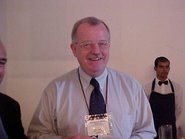 In governments, international organizations or NGOs the function of communications is sometimes directed by the Head of the Information Unit. Sometimes it is directed by the Policy or Management Team. The choice where to position the communications function in an organization depends on the vision one has on the role of communications. On a continuum one can formulate many visions. For reasons of clarity I just describe two extremes on such continuum.
In governments, international organizations or NGOs the function of communications is sometimes directed by the Head of the Information Unit. Sometimes it is directed by the Policy or Management Team. The choice where to position the communications function in an organization depends on the vision one has on the role of communications. On a continuum one can formulate many visions. For reasons of clarity I just describe two extremes on such continuum. If one sees communications only as an instrument to facilitate and clarify operational information to external audiences (especially mass media) one positions the communications function in an Information Unit. And the press officers in this unit are basically directed by the Unit Head.
If one sees communication as a strategic policy instrument to influence knowledge, attitudes and behavior of specific target groups, generating trust and support and engaging audiences in public participation, then communications is often directed by top management and positioned directly under the highest decision making level. And the various communications experts of the unit (varying from media experts, to facilitators of stakeholder dialogues and social marketers) also are the ‘ears’ for top management: they bring into the policy making process the actual attitudes, gossip, prejudices and motivations of the audiences for whom policies are developed.









No comments:
Post a Comment